The Google Nexus 9 Review
by Joshua Ho & Ryan Smith on February 4, 2015 8:00 AM EST- Posted in
- Tablets
- HTC
- Project Denver
- Android
- Mobile
- NVIDIA
- Nexus 9
- Lollipop
- Android 5.0
Software
With the Nexus 9, Google has released the biggest upgrade to Android since 4.0. In some ways, Android 5.0 represents one of the biggest shifts in the design of the OS ever. While we’ve had JIT compiling on Dalvik since Android 2.2, this has remained largely static for the past few years during Android’s monumental growth. With Android 5.0, we see the introduction of Android Runtime, or ART. Instead of trying to compile the application right before execution, ART does most of the compilation well before the application is launched. This incurs higher storage requirements, longer app-install times, and longer first-boot times, but with great benefits to performance. Google has done a great deal of work in general to try and resolve performance issues, as we first detailed in our coverage on ART.
While performance is one major aspect of Android 5.0, Google has also fundamentally redesigned the interface. To replace Holo, Google has introduced Material Design, which emphasizes depth, physics, animation, and a new palette of colors. While it would be great to go over all of these aspects of the Nexus 9, it’s best to refer to Brandon's review of Android 5.0 Lollipop for these issues. Instead, for this review I will mostly focus on the Lollipop experience specific to the Nexus 9. This means that the focus will be on performance of the device in general usage, along with the app ecosystem for Android tablets.
Unfortunately, these seem to be sore points of the Nexus 9 and the broader Android tablet ecosystem. Without question, if we’re talking about tablet applications they definitely do exist for the Nexus 9. The problem is that there is a pervasive lack of applications that are truly designed for a 9 inch, 4:3 aspect ratio display. Applications like Twitter, Facebook, and other first-party apps are simply blown up versions of the phone application. There is some level of extra content presented, but a lot of applications just don’t scale correctly which wastes a lot of real estate on the display. While we found issue with the Nexus 6’s lack of phablet-specific layouts, this is an even bigger issue on the Nexus 9.
While it’s possible to point fingers at app developers for not supporting Android properly, Google seems to have these problems as well. The settings interface is a single large pane of options, instead of a dual-pane interface that allows for simultaneous navigation of the overall settings and individual settings. The Play Store application is mostly similar in this respect, and the YouTube app is possibly the worst example of these kinds of issues. For example, while there is a tablet-specific video view in landscape, most navigation, search, and video selection is identical to what we see on a smartphone.
Nothing really takes advantage of the screen size other than simply being bigger than before. There aren’t any multi-window modes that exploit the larger screen size, and in general the Nexus 9 doesn’t introduce any new functionality that clearly justifies the need for a bag/backpack to carry it. There are applications that take advantage of the larger display, but these are rare. For the most part though, this is effectively true for most tablets other than the Surface Pro 3 which is effectively in a different category altogether.
On the performance side, the story is better but it isn’t perfect either. Similar to Brandon’s experience with the Nexus 6, I often saw random stutters on animations such as the app drawer or while opening an application. It’s hard to say what the cause is at this point, as the Nexus 6 seems to have similar issues with lag even though the Nexus 5 has none of these issues. One might point to FDE causing worse performance, but even that isn’t quite accurate as a build of Lollipop with FDE disabled didn’t do all that much in the way of solving these problems. Overall though, the experience is somehow less performant than the SHIELD Tablet on Android 5.0, even if these issues mostly present themselves in the form of minor frame drops from time to time. I also noticed that there was a distinct lack of available memory over time, which suggests a memory leak as on reboot launcher redraws effectively disappeared.
While these are significant issues that need to be resolved, the experience isn’t actually as bad as it seems. For what it’s worth, Material Design is a great new design scheme to replace the somewhat dated Holo UI that has been in use since Honeycomb/Android 3.0. While there are issues with the tablet experience, if one is willing to look past these issues they will find that the Nexus 9 is a respectable software experience. There’s also the potential for the Nexus 9 to spur improved tablet experiences, although this would be a slow change that could take years to be meaningful.


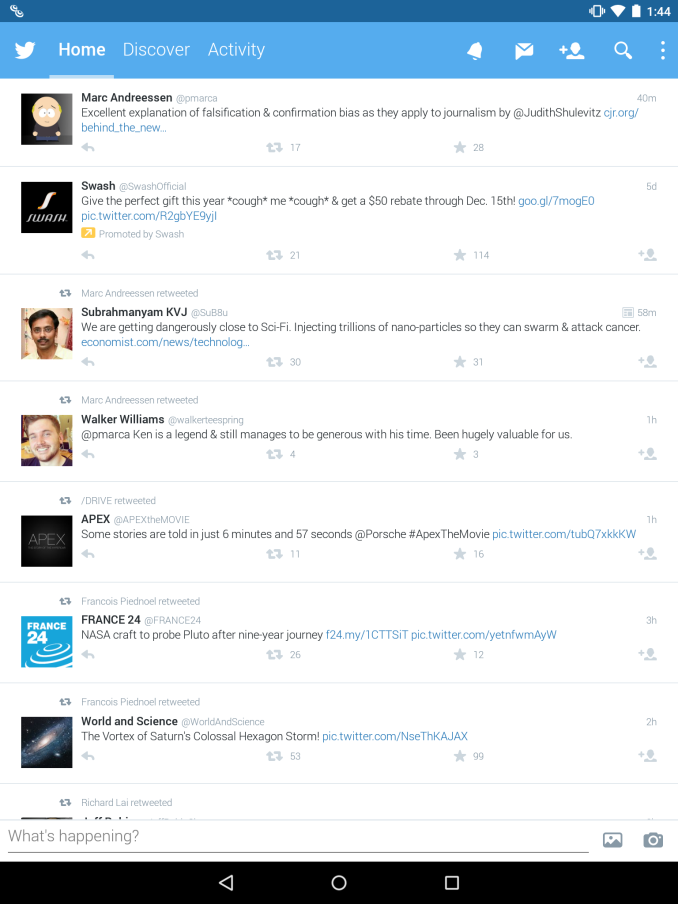
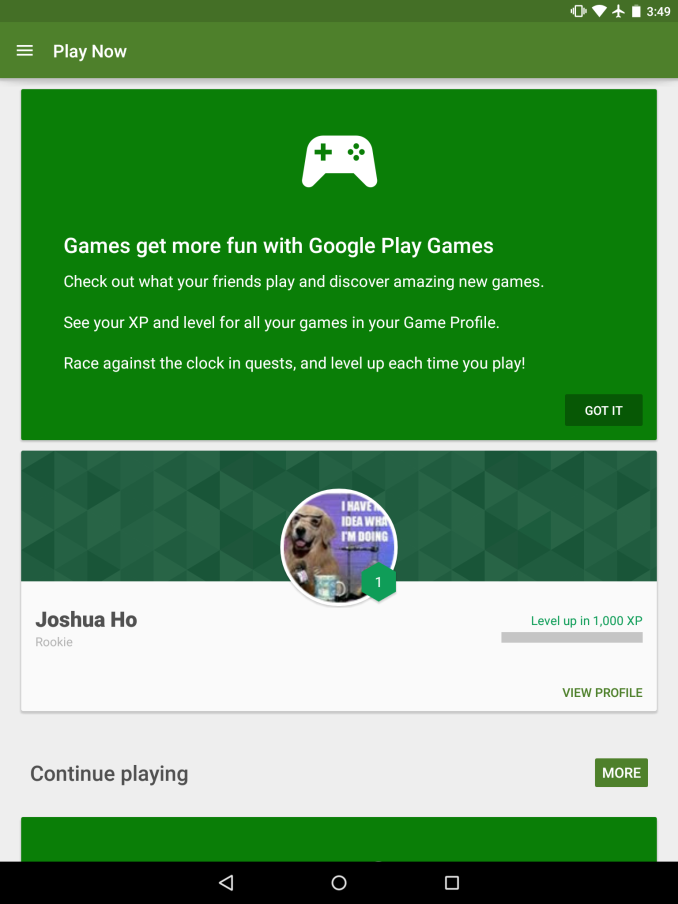
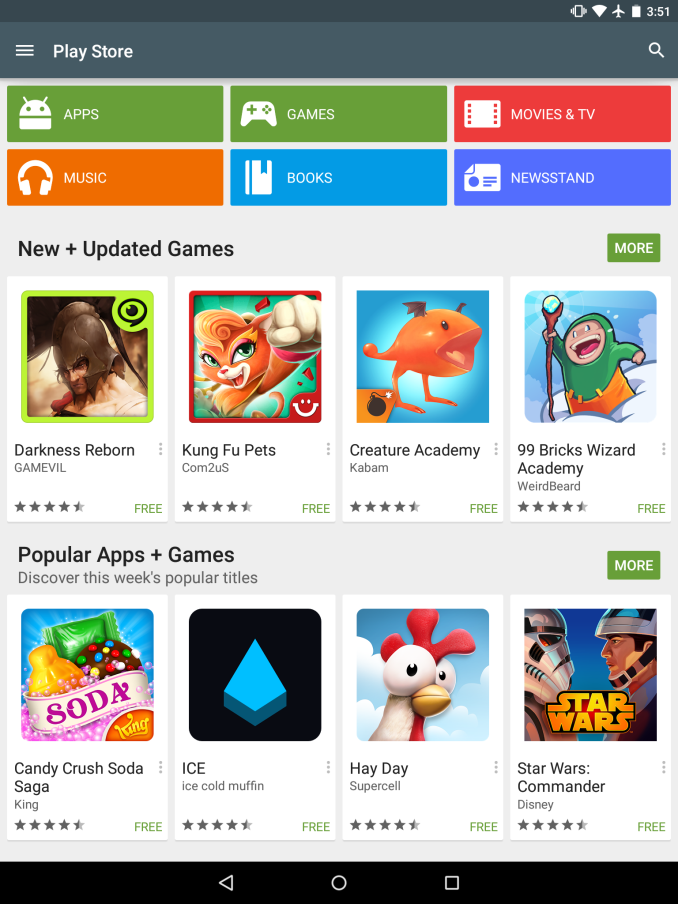
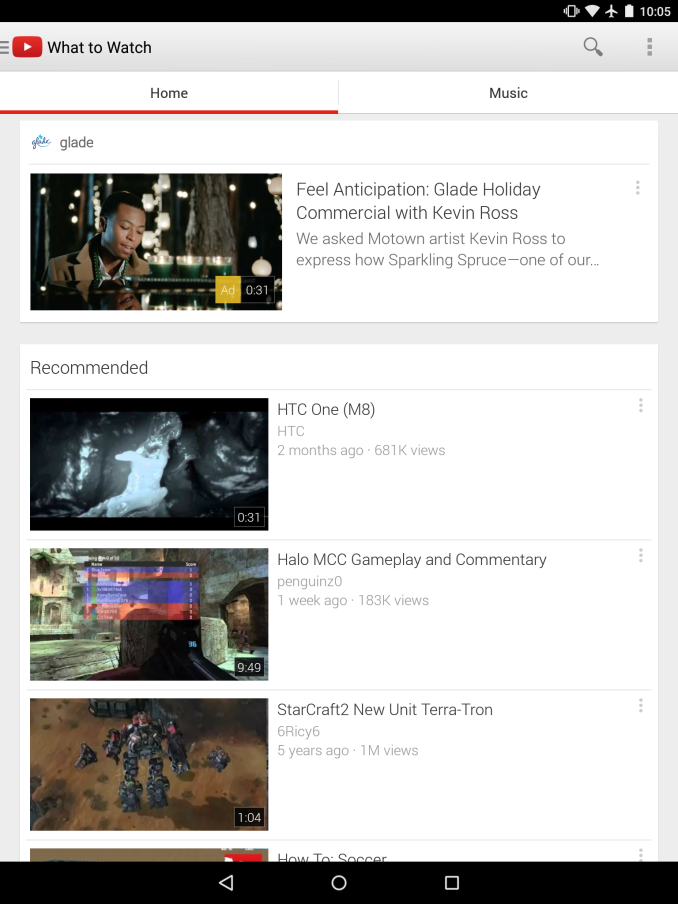
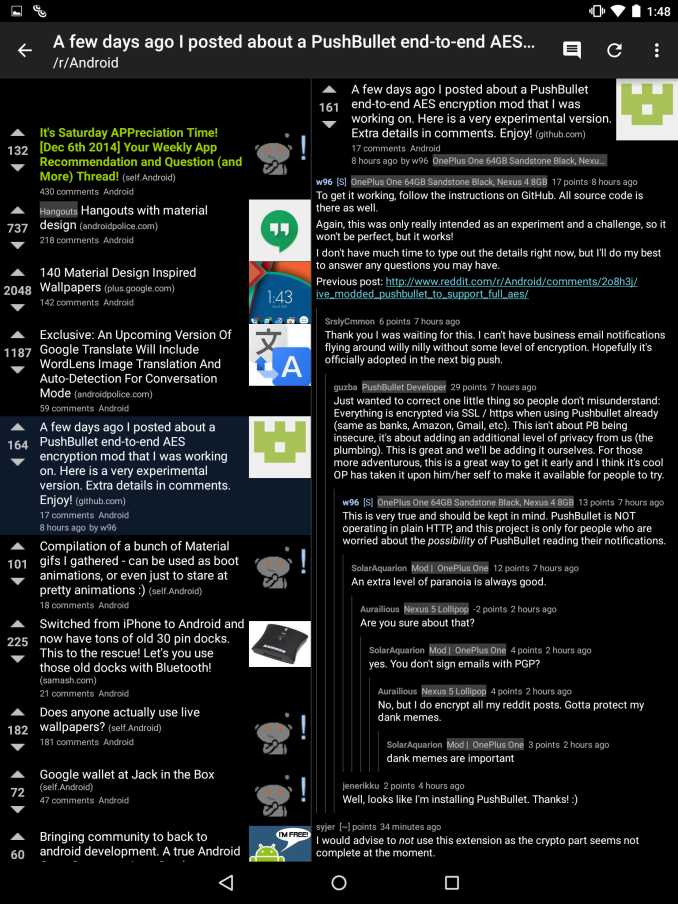








169 Comments
View All Comments
rpmrush - Wednesday, February 4, 2015 - link
I find the 4:3 aspect ratio a turn off. Why change now. There are zero apps natively designed for this in the Android ecosystem. Why would a developer make a change for one device? It just seems like more fragmentation for no reason. I'm picking up a Shield Tab soon.kenansadhu - Wednesday, February 4, 2015 - link
One example to drive my point: I bought kingdom rush and found out that on my widescreen tablet, the game won't fit the screen properly. If any, this will fit apps previously designed for ipads well. Hate to admit it, but apple has such a huge lead in the tablet market it's just reasonable for developers to focus on them first.melgross - Wednesday, February 4, 2015 - link
Well, there are almost no tablet apps at all for Android. One reason is because of the aspect ratio being the same for phones and tablets. Why bother writing g a tablet app when the phone app can stretch to fit the screen exactly? Yes, they're a waste of time, but hey, it doesn't cost developers anything either.Maybe goi g to the much more useful 4:3 ratio for tablets will force new, real tablet apps.
It's one reason why there are so many real iPad apps out there.
retrospooty - Wednesday, February 4, 2015 - link
You sound like you are stuck in 2012. Update your arguments ...UtilityMax - Sunday, February 8, 2015 - link
There will be more tablets coming with 4:3 screen. Samsung's next flagship tablet will be 4:3. As much as I like watching movies on a wide screen, I think it's not the killer tablet application for most users, and most people will benefit from having a more balanced 4:3 screen. It works better for web browsing, ebooks, and productivity apps.Impulses - Wednesday, February 4, 2015 - link
Most simpler apps just scale fine one way or the other... I think 4:3 makes a ton of sense for larger tablets, it remains almost exactly as tall in landscape mode (which a lot of people seem to favor, and I find bizarre) and more manageable in portrait since it's shorter.7-8" & 16:9 is still my personal preference, since I mostly use it for reading in portrait. Try to think outside of your personal bubble tho... I bought the Nexus 9 for my mother who prefers a larger tablet, never watches movies on it, yet almost always uses it in landscape.
It'll be perfect for her, shoot, it even matches the aspect ratio of her mirrorless camera so photos can be viewed full screen, bonus.
UtilityMax - Sunday, February 8, 2015 - link
I personally think about the reverse. Big tablets with 9-11 screens are often bought for media consumption. Because of that, it makes sense for them to come with a wide screen. For me, having wide screen for watching movies on the flights and in the gym was one of the prime reasons to buy a Samsung Galaxy Tab S 10.5, even though its benchmarks look only so so.However, a 9 to 11 inch tablet is too bulky to hold in one hand and type with another. It almost begs for a stand. So for casual use, like casual web browsing or ebook reading, a smaller tablet with a 4:3 screen works better. And so I went ahead and got a tablet with 4:3 screen for that purpose.
Impulses - Monday, February 9, 2015 - link
Valid points, obviously usage cases can differ a lot, that's the nice thing about Android tho... It doesn't have to conform to any one aspect ratio that won't fit everyone's taste.LordConrad - Wednesday, February 4, 2015 - link
I love the 4:3 aspect ratio. I primarily use tablets in Portrait Mode, and have always disliked the "tall and thin" Portrait Mode of traditional android tablets. This is the main area where Google has always fallen behind Apple, IMHO. This is the main reason I gave my Nexus 7 (2013) to my nephew and bought a Nexus 9, and I have no regrets.R. Hunt - Thursday, February 5, 2015 - link
Agreed. I understand that YMMV and all that, but to me, large widescreen tablets are simply unusable in portrait. I'd love to have the choice of a 3:2 Android tablet though.